#hummus salad dressing recipe
Photo
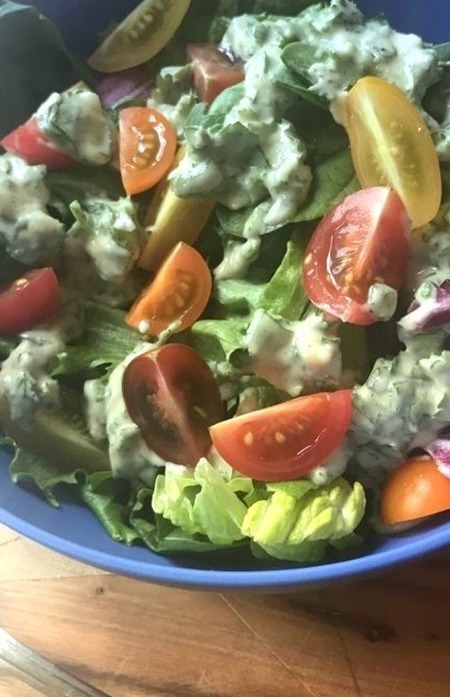
Side Dish - Hummus Salad Dressing Recipe
With this recipe, which begins with hummus and includes a ton of fresh herbs for flavor, you can add protein to your salad dressing.
0 notes
Text
Recipe for Hummus Salad Dressing
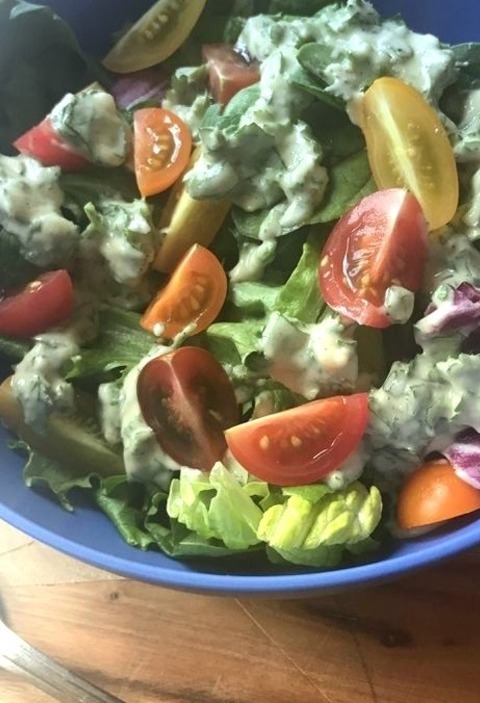
Add protein to your salad dressing with this recipe that starts with hummus and features lots of fresh herbs for added flavor.
0 notes
Photo

Hummus Salad Dressing Recipe
Add protein to your salad dressing with this recipe that starts with hummus and features lots of fresh herbs for added flavor. 2 tablespoons chopped fresh cilantro, 1 tablespoon rice wine vinegar, 2 tablespoons chopped parsley, salt and ground black pepper to taste, 1 tablespoon water or more as needed, 2 tablespoons olive oil, 1/2 cup hummus, 1 clove garlic minced
0 notes
Photo
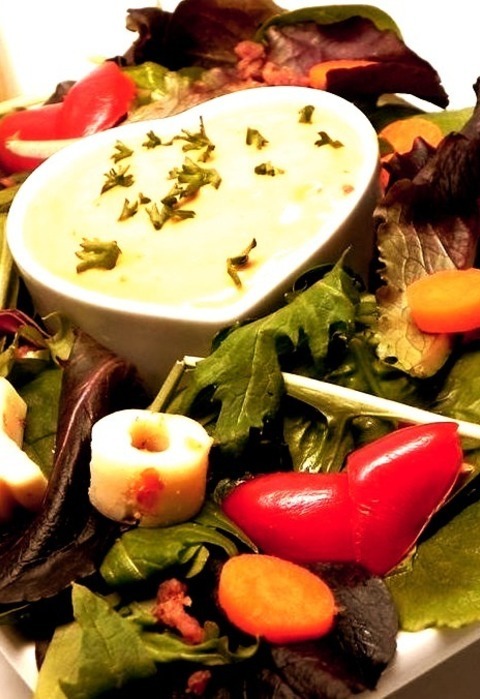
Red Pepper Hummus Salad Dressing Recipe
Blend prepared red pepper hummus with milk, ranch dressing mix, parsley, and salt to create a salad dressing. 2 tablespoons parsley flakes, 1 cup prepared red pepper-flavored hummus, 2/3 cup low-fat milk, 1/2 teaspoon salt, 2 tablespoons dry ranch dressing mix
0 notes
Photo

Tasteful Tahini Salad Dressing - Side Dish
Tahini gives this homemade salad dressing a slight hint of creaminess.
0 notes
Photo
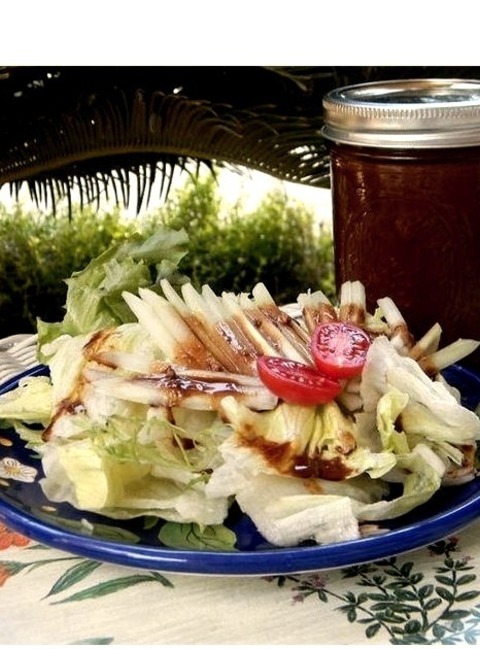
Tasteful Tahini Salad Dressing
This homemade salad dressing gets a hint of creaminess from the addition of tahini.
0 notes
Photo

Tasteful Tahini Salad Dressing - Side Dish
Tahini gives this homemade salad dressing a slight hint of creaminess.
0 notes
Text
Under 150 kcal whole-food, vegan recipes ❤️ SO MUCH FLAVOR! 🌿 no sweets
Vegan Mushroom Stroganoff (120 kcal)
Root Vegetable Salad with Sweet Potato Crunchies (79 kcal)
Slow Cooker Sweet Potato and Kale Soup (130 kcal)
Christmas Spiced Red Cabbage (use vegan butter/oil) (79 kcal)
Charred Onion and Tomato Salad (81 kcal)
Baked Apple Chips (32 kcal)
Chimichurri Sauce, Oil-Free (I would put over large portabella cap for ~+20 kcal) (8 kcal)
Baked Zucchini Tater Tots (104 kcal)
Air Fryer Beet Chips, Oil-Free (49 kcal)
Spicy Cauliflower Cheese Sauce (44 kcal)
Spicy Vegan Salami (111 kcal)
Smashed Salt & Vinegar Potatoes (must omit oil, will cook fine I promise) (148 kcal)
Candied "bacon" pecans (107 kcal)
Pumpkin Spice Hummus (103 kcal)
Air Fryer Pineapple (90 kcal)
Avocado Green Goddess Dressing, Oil-Free (66 kcal)
Vegan Coleslaw (140 kcal)
Cranberry Risotto Stuffed Mushrooms (40 kcal)
Cauliflower Buffalo Wings (118 kcal)
Polenta Pizza Crust (167 kcal ugh)
Cranberry Broccoli Salad with Poppy Seed Dressing (omit chickpeas) (227 kcal >:( but I have to try this sometime)
#thin$po#ed behaviors#tw ed in the tags#anorex14#ed not ed sheeran#pro for ana#tw ana shit#tw ed relapse#ana stuff#tw ana diary#tw ana related#tw ana vent#tw ed diet#mealspo#mealsp0#low cal meal#foodsp0#m3alspo
4K notes
·
View notes
Text
As the waves of Jewish immigration intensified and the desire (overt or covert) to become a replacement to the Arab-Palestinian people increased, the Zionist leadership advocated a policy of separation on all social, political and economic fronts. One of the most visible manifestations of this separation was the Zionist campaign for the purchasing of Jewish only goods, known in Hebrew as Totzeret Ha’aretz—literally “the produce of the land.” This resulted in a clear differentiation between the permeation of Arab-Palestinian culture into Jewish life and the barriers placed on social, economic and political integration and interaction. In the words of Zerubavel, “politically, the Zionists ignored the Arabs, but culturally, they romanticized and tried to imitate them.”
For example, Dafna Hirsch, in her biographic study of hummus, describes how it was initially considered part of the local Arab-Palestinian food culture and repertoire in the 1930s, worthy of adoption due to its nutritious value. However, in the 1950s, through the process of industrialisation, mass production and marketing, it was appropriated and nationalised, and its Arab origins were supressed. The Arab-Palestinian origins of the product were omitted and marginalized and its connection to Jewish and Jewish-Israeli traditions, especially to the Mizrahi-Jewish Diaspora, emphasized. For Jewish-Israelis, hummus became a national dish, the eating of which was part-and-parcel of daily life, either purchased from Jewish-Israeli food companies, such as Telma, or consumed at home or at Mizrahi-Jewish restaurants.
The hummus example in this regard is not unique; I will demonstrate these processes by deconstructing one of Israel’s most well known dishes, the Israeli salad. There might not be a more popular dish in Israel than the Israeli salad, sometimes also referred to as Salad Katsuts (chopped salad). The salad is based on chopped vegetables (normally tomatoes, cucumbers and onions) and fresh herbs (mostly parsley but sometimes also mint) and dressed with olive oil and lemon juice. A recent book, Fresh Flavours from Israel, by Jewish-Israelii food writer Janna Gur, states that “Israelis must have their salad at least once a day.” It is an accompaniment to every meal, whether eaten at home or outside. In fact, you would be hard pressed to have a meal anywhere in Israel without it. No Israeli cookbook from the 1960s onwards is truly complete without providing a recipe for it. This is true with regards to those written for Jewish-Israeli and foreign audiences. To the unsuspecting viewer, the Israeli salad is the epitome of Israeli food culture: it is fresh, simple, healthy and [symbolizes] the strong relationship the nation has with its agricultural produce. The salad, therefore, serves as both an internal and an external banal symbol of Jewish-Israeli identity.
What are the origins of the Israeli salad? Reading through literary accounts of growing up in Israel, the salad became a staple food product in the Kibbutzim canteens, from there it moved to the Israeli army’s mess halls and to Israeli homes. The fact that the salad is mentioned mostly as a chopped vegetable salad by Israeli authors describing living in Israel in the 1930s and 1940s demonstrates that it did not arrive with the wave of Jewish immigrants from North Africa and the Arab world after the state was established in 1948. It was also not prevalent in the diet of Central and Eastern European Jewish communities, from where most immigrants came. On the other hand, there are a number of accounts, mostly by travel writers, such as Masterman and Grant in the early-1900s and that of the Mary Eliza Rogers as far back as 1865, that describe the preparation and consumption of a chopped vegetable salad in Palestine. Rogers describes the salad as accompanying most meals served by the upper and governing classes in Palestine, at the time part of the Ottoman Empire. In other words, it is either that early Zionist immigrants to Palestine independently invented the salad, or, as I argue hereafter, they imitated, adopted and later appropriated and nationalised an existing local custom.
– Ronald Ranta, “Re-Arabizing Israeli Food Culture.” Food, Culture & Society 18(4):611-627 (December 2015). DOI: 10.1080/15528014.2015.1088192
117 notes
·
View notes
Text
Hey, for any of my little sibs trying to learn to eat salads/vegetables but running into a lot of unhappiness/failure/sensory issues, I recently started learning to eat veggies after a lifetime of struggling due to autism and sensory issues, and I have some tips that I’ve collected along the way!
Forget all about the “healthiest varieties” or “most nutritional salads” elitism.
A lot of that talk is based on bogus science or half-truths to begin with, but even for anything that’s true, you’re trying to eat in a way that is sustainable for you. You don’t need to be like anybody else. If you like iceberg lettuce, screw the people who say “well that doesn’t have any nutritional value”. It’s fiber and roughage if nothing else! You like a lot of dressing or add ins and people tell you that isn’t a real salad/isn’t a healthy salad? It’s more vegetables than no vegetables! It gets the greens in your body! Do your thing, you don’t deserve guilt (external or internal) for figuring out your own path.
This is about habit forming and breaking bad associations to form better ones.
Think of this as practice! I eat salads nearly daily when available because I genuinely look forward to them now, but I used to want to retch at just the thought of salad. When I used to think of salads, I always thought of being a kid and trying not to gag while forcing sensory hell so that adults wouldn’t get mad at me. It was punishing for me, and it took a lot of gentle work to change that association! So if you hate salads, really try to identify why. Are they bland and tasteless to you? Conversely, are the bitter flavors too strong? Is it a textural thing? Do you have some highly negative experiences with them in the past?
Don’t force yourself to keep trying something you know you hate.
I personally can’t stand a lot of “ultra healthy” salads that have a lot of different textures/flavors mixed in, and years of trying to suffer through salads like that never made me like them more. Back to the first point again, forget about what you’re “supposed” to be eating and eat what you find the least repulsive tbh.
The greens you choose can make a massive difference, so try a lot of different things!
This is especially important if texture or flavor is an issue for you. Personally I find iceberg lettuce the “easiest” because it has a very mild taste. I started out my adventures in learning to eat salad eating EXCLUSIVELY iceberg lettuce. Butter lettuce or romaine (especially romaine hearts) are others that are popular for being pretty palatable, and I’ve come to love them! And you don’t even HAVE to have lettuce! You can have cabbage, beets, carrots, whatever! Pick a vegetable you like and search for salad recipes using it!
Find a dressing you really like and drench that bad boy if you need to!
Some people really like ranch, or poppyseed dressing, or vinaigrettes, or even sweet dressings with honey and fruit! You can use mustard or honey in dressings! Look up different types of salad dressings and try them all out if you want. Personally, I really like zingy dressings like Italian vinaigrettes or blue cheese, but everyone’s different. You can make a lot of dressings at home, too, and if you have the stuff already it can be a cheap way to find what you like. I know dressing freaks some people out, but referencing my very first point again; some salad is way better than no salad. You may even eventually find yourself able to use less and less once you’re more accustomed to eating salad! So use as much as you need, whether it’s just for now or forever.
Toppings! Salads are allowed to be goodies with obstacles!
Use a protein like chicken or fish (I like tuna a lot) or crumbled bacon, use croutons, hummus, little cubes of cheese or shredded cheese, sliced hard boiled eggs, whatever! If there’s vegetables that you know you like, put those in! I love some sliced cucumber or shredded carrots in my salads. Some people do nuts like almonds or cashews in their salads, some people use chickpeas and corn from a can, and if you’re feeling super adventurous you can try some fruit to sweeten things up! If you like variety then mix warm foods and cold foods, creamy textures and crunchy textures! Make it totally your own. Personally, I’ll sometimes eat around my croutons so that once I’ve eaten all of my greens I have a big, crunchy reward. There’s no rules for how you have to eat something!
Conversely, be as simple as you need to be.
If you need to get used to salads by eating just iceberg lettuce and ranch for a while, you don’t need to be embarrassed! You don’t have to throw the kitchen sink at your salad, even if that’s what helps some others! This is about what works for you.
Don’t be afraid to have salad ingredients… not as a salad!
You can make a green smoothie by blending ingredients if texture is your big issue! Or make a fruit smoothie with some spinach or lettuce thrown in to help you ease into it. Or try dicing up some lettuce, cabbage, and a preferred vegetable or two (avocado, bell pepper, tomato, or cucumber would all work!). Drizzle that with a generous amount of dressing or sauce, and you can use it as a chip dip! Tortilla chips work especially well for this. Or maybe make a vegetable wrap in an actual tortilla? Or throw some chopped up vegetables in your next soup. Even if it’s as simple as putting some lettuce, carrots, or tomatoes into a sandwich, that’s awesome too!
Even outside of salads, experiment with texture for vegetables!
You can roast most vegetables on a sheet pan in the oven (or in an air fryer) for a crispy and crunchy experience! Or you can boil or steam them on a stovetop (or in the microwave) to different levels of softness; you can get most vegetables pretty mushy with enough time, if crunchy textures are hard for you! Looking up vegetarian versions of your favorite meat-including dishes can sometimes also offer great ideas for getting different textures out of vegetables! Try everything that you think you might like: grilling, griddling, roasting, steaming, boiling, sautéing, braising, stir frying, and blanching (which also helps reduce bitterness!) are all different methods to look into, and different methods have different results with different vegetables!
Big takeaway…
Be patient and kind with yourself. Working through food aversions is hard. The goal is gently pushing/testing your boundaries and expanding your comfort zone, NOT forcing yourself. Forcing yourself into extreme discomfort, distress, or pain typically only makes aversions worse! So it’s in your best interest to be patient and go as slowly as you need to. Be proud of yourself for trying, and don’t let anyone (including yourself) make you feel shame for doing what you can.
And obligatory disclaimer:
Please don’t get discouraged if none of these tips work for you! This isn’t an exhaustive list, and I’m not any kind of professional. This is just a mix of tips I’ve seen online, and what worked for myself and my own sensory issues, and I’m still learning more about myself all the time! If you’re struggling, there’s still more out there! You can achieve your goals, I believe in you. 💖
#mod static#food tw#food aversion#autism#sensory disorders#healthy eating#nutrition#long post#text heavy#please let me know anything else that you’d like this tagged as!#I know that this is a sensitive topic for a lot of people#I hope that I address it with enough tact that nobody feels bad#also to anyone looking for ideas for preparation methods#I really like Nutrition By Kylie on YouTube!#she’s a dietician and she is EXTREMELY positive in her outlook and doesn’t shame anyone#and her content is some of the only Healthful Eating type content that not only doesn’t trigger any of my disordered thoughts with food#but actively helps me combat my struggles with it#I really hope that this helps someone. and thank you for reading all of this if you do!#any of my followers with other positive and non-shaming resources or tips that I missed are very encouraged to add onto this btw!!
11 notes
·
View notes
Text
Here's a simple and easy-to-follow 1-week meal plan:
Day 1:
Breakfast: Avocado toast with scrambled eggs
Lunch: Greek salad with whole-grain pita bread
Dinner: Baked chicken breast with roasted vegetables
Day 2:
Breakfast: Overnight oats with berries and almonds
Lunch: Vegetable stir fry with tofu or chicken
Dinner: Salmon with quinoa and steamed vegetables
Day 3:
Breakfast: Banana and peanut butter smoothie
Lunch: Grilled chicken salad with vinaigrette dressing
Dinner: Vegetable lasagna with whole-grain noodles
Day 4:
Breakfast: Greek yogurt with granola and fruit
Lunch: Black bean and corn salsa with tortilla chips
Dinner: Shrimp stir fry with brown rice
Day 5:
Breakfast: Blueberry muffin with honey butter
Lunch: Turkey and cheese sandwich on whole-grain bread
Dinner: Baked sweet potato topped with black beans and avocado
Day 6:
Breakfast: Peanut butter and banana toast
Lunch: Hummus and vegetable wrap
Dinner: Lemon-pepper cod with roasted potatoes and green beans
Day 7:
Breakfast: Spinach and cheese omelet
Lunch: Tuna salad with crackers
Dinner: Homemade pizza with whole-grain crust and vegetable toppings
This meal plan includes a variety of nutritious and delicious options that are easy to make at home. Feel free to substitute ingredients and customize the meals to suit your taste preferences and dietary needs.
Get Meal plans and recipes
#meal time#meal ideas#keto meal plan#meal plan#meal planning#happy meal#mealsp0#mealspo#low cal meal#mealspø#meal prep#meal plan for weight loss#meal plan dubai#healthy eating#healthy food#diet plan#weight loss diet#ed dieta#low cal diet#3d diet#healthy diet#dieting#diet#nutrition#nutritious#tw skipping meals#weight loss#health#health & fitness#healthy weight loss
18 notes
·
View notes
Text
Healthy foods to gain weight vegan
Gaining weight on a vegan diet requires a strategic approach to ensure you're consuming enough calories and nutrients. Here's a unique list of healthy, calorie-dense foods for weight gain on a vegan diet:

Nuts and Nut Butters:
Almonds, cashews, peanuts, and their respective nut butters are calorie-dense and rich in healthy fats, protein, and micronutrients.
Avocado:
Avocados are not only nutritious but also high in healthy fats and calories, making them a great addition to salads, sandwiches, or as a standalone snack.
Dried Fruits:
Raisins, dates, apricots, and figs are concentrated sources of calories and natural sugars, providing energy for weight gain.
Quinoa:
A versatile and nutrient-dense grain, quinoa is rich in protein and complex carbohydrates, making it an excellent choice for bulking up meals.
Coconut and Coconut Oil:
Coconut and its oil are calorie-dense sources of healthy fats. Adding coconut milk to dishes or using coconut oil in cooking can increase calorie intake.
Hummus:
Made from chickpeas, hummus is a calorie-dense spread that can be used as a dip or added to sandwiches and wraps.
Olive Oil:
Drizzling olive oil over salads or using it in cooking can add healthy fats and extra calories to your meals.
Legumes and Pulses:
Beans, lentils, and chickpeas are excellent sources of plant-based protein and complex carbohydrates, supporting muscle growth and providing energy.
Plant-Based Milk:
Opt for fortified, unsweetened plant-based milks like almond, soy, or oat milk to add extra calories and nutrients to your diet.
Whole-Grain Bread and Pasta:
Choose whole-grain options to increase the calorie and nutrient content of your meals.
Dried Coconut:
Snack on dried coconut flakes or add them to dishes for a calorie boost.
Seeds:
Chia seeds, flaxseeds, and pumpkin seeds are rich in healthy fats, protein, and calories. Sprinkle them on salads, yogurt, or smoothie bowls.
Dark Chocolate:
Dark chocolate in moderation can be a tasty and calorie-dense treat, providing healthy fats and antioxidants.
Tahini:
Made from sesame seeds, tahini is a calorie-dense spread that can be used in dressings, dips, or as a topping.
Plant-Based Protein Powders:
Consider adding vegan protein powders to smoothies or recipes to increase your protein and calorie intake.
It's essential to focus on nutrient-dense foods even when aiming to gain weight. Additionally, consider working with a registered dietitian or nutritionist to create a personalized plan that meets your specific calorie and nutrient needs.
Read more about healthy foods to weight gain vegan :
#healthy lifestyle#healthy eating#health and fitness#nutrition#healthy#healthy living#workout#exercise#healthy food#spiritual development#weight gain encouragement#fat belly#fatty#chubby#gay gainer#gaining weight on purpose
19 notes
·
View notes
Text
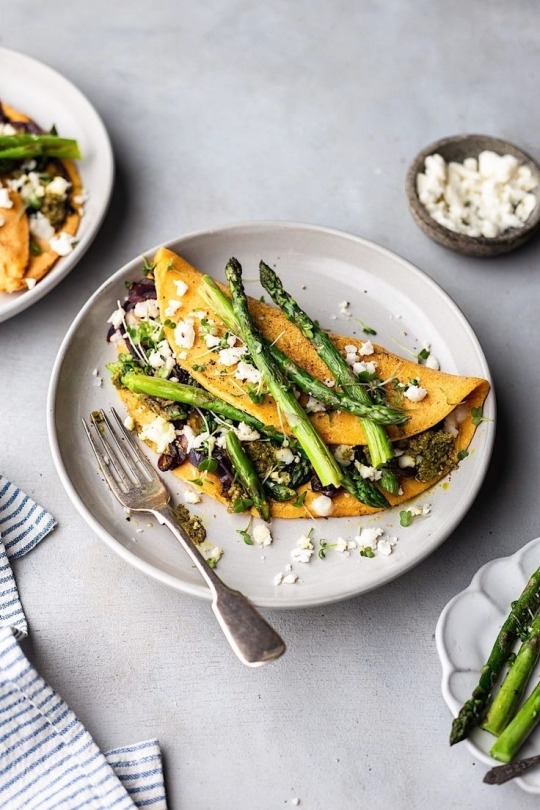
Nutritious meal plan recipes that can help support a healthy immune function -
Breakfast:
- Overnight oats with Greek yogurt, berries, and nuts
- Spinach and feta omelette with whole grain toast
- Chia seed pudding with almond milk and sliced bananas
Lunch:
- Quinoa salad with roasted vegetables, chickpeas, and a lemon-tahini dressing
- Lentil soup with carrots, celery, and kale
- Grilled chicken and vegetable wrap with hummus and avocado
Dinner:
- Baked salmon with quinoa and steamed broccoli
- Turkey chili with kidney beans, bell peppers, and onions
- Stir-fried tofu with mixed vegetables and brown rice
Snacks:
- Greek yogurt with honey and almonds
- Sliced apple with almond butter
- Carrot sticks with hummus
These recipes are packed with nutrients such as vitamins, minerals, antioxidants, and protein that can help support a healthy immune system. Remember to also stay hydrated, get enough sleep, and engage in regular physical activity to further support your immune function.
#comfort food#fast food#food fight#food for thought#healthy food#food photography#foodie#food#foodpics#foodlover#foodmyheart#japanese food#healthy salad recipes#lunch recipes#pasta recipes#pasta recipe#salad recipes#soup recipe#recipe#reciprocity#recipies#recipes#healhtylifestyle#healthy lunch ideas#healthy lunch#healthy diet#healthy#healthy living#mental health#cozy autumn
3 notes
·
View notes
Note
Rae what do you normally buy in a grocery run? I am single for the first time in my adulthood and I cook but my ex would decide the groceries.I know if I want to make lasagna I need to buy sauce and whatnot all that but what do you buy to have on hand for times you don’t want to plan?
so first of all, i was in your shoes a year ago and it took me a LONG time to start cooking again. take it slow! buy prepackaged when you can, if that makes it likelier for you to eat healthy. i used to cook pretty much all my meals and... then i broke up with my ex and got sick and fell into a depression and just recently clawed out of it. so now i supplement a lot with bagged salad because otherwise i won't eat vegetables fjadskl.
here is my guide! i copy/pasted this from my last couple of grocery runs. this is what i do to get me through like 2-3 weeks and it includes staples:
ingredients you need for whatever you plan to cook that week
1 type of vegetable you like (i always go for broccoli because it's nutritious and easy to cook in lots of dishes like pasta, or a side, etc.)
1 type of frozen protein (i usually go for pre-marinated salmon and edamame)
some canned beans
some canned tuna
canned tomatoes
pasta sauce or tomato paste
bread
some fruit you like/can eat raw (apples, melons, berries)
1 produce that will keep for a while (potatoes, apples, carrots, squash, etc.)
some bagged, prewashed salad (good as a meal with some protein or a side)
if you don't like bagged salad: some greens + yummy salad toppings + yummy salad dressing (splurge on the good stuff here if that makes you likelier to eat it)... spinach and kale are good options because you can eat them raw or easily add the to almost any recipe
pasta, rice, or quinoa
greek yogurt or cottage cheese
for snacks:
hummus
cheese sticks
pepperonis or prosciutto or beef jerky
crackers
fun chip (like potato chips, doritos, whatever)
cookies
whatever individual-portioned dessert you want: pudding cups, a little ice cream sandwich, w/e!
and for some meal ideas:
bagged salad + package of tuna (i like caesar salad or dill salad)
spaghetti with ground turkey
microwaved sweet potato topped with cottage cheese or greek yogurt, butter, lots of seasonings
picadillo (ground meat + diced potato w/ canned tomatoes and spanish rice)
mac n cheese from a box + broccoli florets mixed in while the pasta boils
snack plate! cheese, pepperoni, crackers, cottage cheese, berries, and carrots with hummus
cottage cheese on toast topped with evoo and seasonings
11 notes
·
View notes
Text



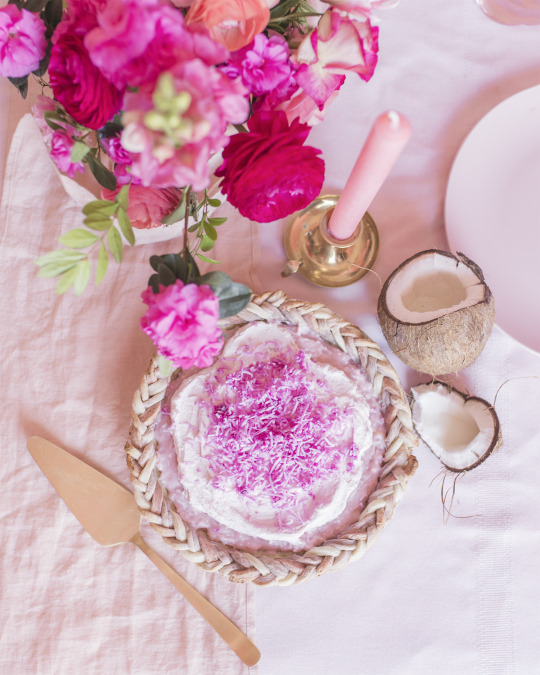
An All Pink Dinner Party (Vegan)
a pink veggie platter complete with beet hummus, then a spiralized citrus salad with rose dressing. Our main was a true masterpiece – pink gnocci with pink tinted vegan alfredo sauce! We finished the menu off with a dreamy pink coconut cream pie (recipes here)
#vegan#dinner#charcuterie#vegetable platter#radishes#cauliflower#radicchio#beets#carrots#salad#grapefruit#gnocchi#alfredo#pie#coconut#💗
54 notes
·
View notes
Text
Spinach and Arugula Salad with Hummus-Dill Dressing & White Beans
My family is loving this spinach, arugula salad, and fennel salad! It is topped with a lemony hummus dill dressing (so easy to make) but the best part is the crispy white beans. They give this salad a pop of flavor and is a nice way to get my kiddos interested in both the salad and the beans.
The recipe is gluten-free, dairy-free and soy-free! If you are interested here it is:
https://at-my-table.com/spinach-arugula-salad/
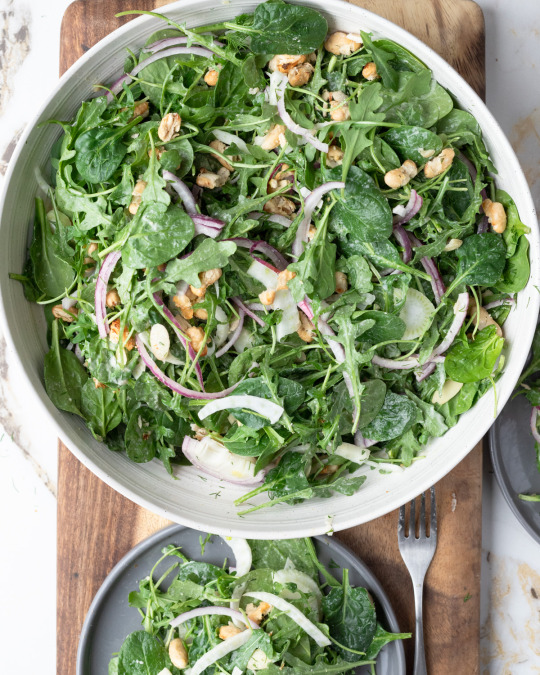

4 notes
·
View notes